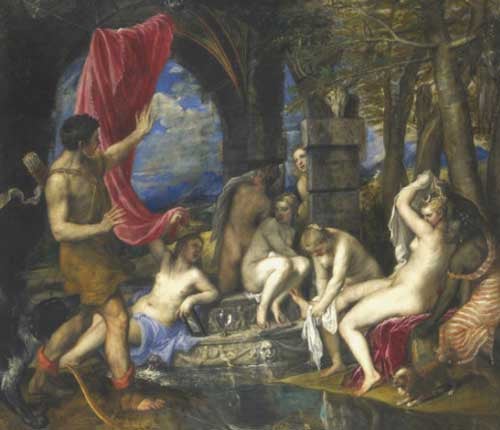The £100m heirloom: Ancestor's eye for an art bargain pays off for Duke

Some 220 years ago, a shambolic English aristocrat with a fondness for smoking a labourer's clay pipe staged one of the great art-buying coups by acquiring 305 masterpieces, including two coveted works by Titian, from the collection of a close relative of the recently beheaded French king Louis XVI. The price? The trifling sum of £43,000.
The peer was the 3rd Duke of Bridgewater, a lifelong bachelor who called off an engagement to one of the great beauties of 18th- century English society to become Britain's richest man by building canals. Yesterday, his direct descendant, the 7th Duke of Sutherland, said the time had come to finally reap the reward of his ancestor's aesthetic and financial acumen by offering the two Titian paintings to the nation for a combined total of £100m.
The National Galleries of Scotland, which have hosted the Titians along with 26 other works from the Bridgewater Collection since they were offered on loan to the Edinburgh museum in 1945, alongside the National Gallery in London, said they had joined forces to try to raise the money to buy the Renaissance masterpieces for £50m apiece, thus securing their future as public works of the art.
The two galleries now have just four months to raise the funds to buy the first of the paintings – Diana & Actaeon, a representation of the Greek myth painted by the Venetian master between 1556 and 1559 – and prevent the works from potentially being offered for sale on the open market and put at risk of export abroad.
In an attempt to avoid that, the Titians, described by the artist Lucian Freud as "simply the most beautiful pictures in the world", are being offered by the Sutherlands at a price far below their market value, estimated to be in excess of £300m for both paintings.
Art experts said the purchase of the paintings would be the most important acquisition for the National Gallery in London since the 19th century and the most significant purchase for the Edinburgh gallery since it opened in 1850. The sale would also comfortably exceed the previous record for a work of art bought by a British public institution, set by the National Gallery in 2004 when it paid £22m for Raphael's Madonna of the Pinks.
The deadline of 31 December to complete the sale of Diana & Actaeon at the height of the credit crunch will also test to breaking point the fundraising resources of both galleries, whose combined annual budget for new acquisitions is about £4.m, meaning they must seek the bulk of the required cash elsewhere.
It is likely the Treasury will be approached for a special grant, along with applications to private donors, lottery funds and the Scottish government. But the Department for Culture, Media and Sport said already it recognised the "national importance" of the paintings but added: "There simply isn't a pot of gold that can be magically drawn upon."
John Leighton, director of the National Galleries of Scotland, said: "Many will claim this is a crisis but we should see it as an opportunity. We have known for decades that paintings in the [Bridgewater] collection may be offered for sale. The paintings are being offered at a price considerably below their true value. It is a stupendous deal.
"The loss of these paintings is unthinkable. They are of enormous historical and art historical importance. But they also represent emotion translated into paint. They are quite simply knock-out pictures."
Francis Egerton, the 7th Duke of Sutherland, is an Eton-educated former Suffolk farmer and the eighth generation of his family to act as custodian of the results of his predecessor's collecting mania. The Duke's representatives said the decision had been taken to sell the Titians – the most valuable works in the Bridgewater loan – because too much of the family's wealth was wrapped up in the 28 paintings, which if offered on the open market would be worth in excess of £1bn.
Subscribe to Independent Premium to bookmark this article
Want to bookmark your favourite articles and stories to read or reference later? Start your Independent Premium subscription today.

Join our commenting forum
Join thought-provoking conversations, follow other Independent readers and see their replies